If you are a student and are interested in a China tour, this 13-day China student tour is the best choice for you. You can visit several cities with a long history, such as Beijing, Xi’an, Luoyang, and Shanghai. In these cities, you will have a glimpse of the rich cultures of China. If you are a lover of Chinese Kungfu, you can’t miss the China Student Tour with Shaolin Temple. You can enjoy the Kungfu show at the Shaolin Temple and even learn some moves from the monks. I believe you will have a deeper understanding of Chinese Kungfu through your China Student Tour with the Kungfu show. Besides Chinese culture, you could also admire the natural sceneries on your China Student Tour with Mount Huangshan. Standing at the peak of this mount, you will have a full view of this place and appreciate the wonders created by nature. Of course, all the must-sees in Beijing, Xi’an, and Shanghai are also included. Come to China and start your China Student Tours. You will get an unparalleled experience.

You will begin your China Student Tour in Beijing. As soon as you arrive in Beijing, your tour guide will pick you up at the arrival lobby and take you to the comfortable hotel prepared for you. You can have a good rest there and get ready for tomorrow’s journey. Beijing is the capital city of China, with an area of 16,410 square kilometers. It has a population of more than 21.89 million. Beijing is located in the north of China, and it is cold in winter and hot in summer. As the heart of China, Beijing has busy traffic because many people come here for a living and millions of trades are made here. Beijing is a city with a long history and during its development, many delicious foods are discovered, such as Beijing Roast Duck, Soybean Cake, and Stewed Liver. You can try some new things during your China student tour from Beijing.
Today you will start your tour in Beijing. After breakfast, your tour guide will take you to Tian’anmen Square. Tian’anmen Square was built in 1417, representing the authority of the emperor of the Ming (1368-1644) and Qing (1636-1912) Dynasties. It is located at the center of Beijing, covering an area of 440,000 square meters. This place can hold 1 million people to gather here. At the center of the square stands Monument to the People’s Heroes and Chairman Mao Memorial Hall. Tian’anmen Square has witnessed many events, such as the founding of the People’s Republic of China, and the 100th anniversary of the founding of the Communist Party of China.
After that, you will go to the Forbidden City (closed each Monday). The Forbidden City is the imperial palace of the Ming and Qing Dynasties. It was built in 1420. The Forbidden City covers an area of 720,000 square meters with more than 70 palaces and 9,000 rooms. It used to be the home of 24 emperors. If you walk around the Forbidden City, you may notice that there are many water vats everywhere in this place. These water vats are not only for decorations but also to prevent fires. The main building material of the Forbidden City is wood. Therefore, it is easy to catch fire in the dry season. At that time, putting a water vat everywhere and filling it with water could help put out a fire when necessary. In winter, the servants of ancient China would start a fire near the water vat or put cotton-padded covering to cover it to make sure the water inside is not frozen. Now, these water vats have been given different meanings. Visitors here tend to touch the water vats to wish for luck. If you come here, you can have a closer look at the water vats and touch them by yourself. Maybe you will get some lucks from these ancient guards of the Forbidden City.
In the afternoon, you will get to the Temple of Heaven, which was built in 1420. It is a sacrificial altar in ancient China for emperors to pray for a good harvest. There are many architectures included in this building complex, the Hall of Prayer for Good Harvests, the Circular Mound, the Hall of Abstinence, and so on. The Temple of Heaven covers an area of 2.73 million square meters. It is three times larger than the Forbidden City in size. When there was a sacrificial ceremony, the whole country would take everything to prepare for it. Five days before the ceremony day, the prince (brothers of the emperor) would check the livestock prepared for the sacrifice. Three days before, the emperor would abstain from meat and wine. Two days before, the congratulatory message would be written and taken to the emperor. The day before the ceremony, everything that the sacrifice needed would be ready, and the officials would check all the arrangements to make sure the ceremony the next day goes well. When everything was ready, the emperor would pray to heaven for a bumper harvest here. From this ceremony, we can see that the ancient emperors attached great importance to sacrifices and the important status of the Temple of Heaven.
After visiting the Temple of Heaven, you will go to the Summer Palace. The Summer Palace was one of the four imperial gardens in China and was built by Emperor Qianlong of the Qing Dynasty. It was originally built in 1750 for Empress Chongqing (mother of Emperor Qianlong). It was rebuilt in 1888, acting as a place for emperors and their families to spend the summer at leisure. As a southern-style garden, the Summer Palace will present you with the view of mountains and lakes interlaced with each other. You can enjoy the exquisite landscape that could only be seen in the south of China. If these sceneries can not content you, you can walk through the Long Corridor, which is famous for its fine architecture and colorful paintings. The corridor is 728 meters in length with 548 columns. You can appreciate the paintings while passing through the Long Corridor. The paintings include landscape paintings, bird-and-flower paintings, and the plots of China’s four great classics (Water Margin, Romance of the Three Kingdoms, The Journey to the West, and A Dream of Red Mansions). Walking in the corridor, you will have a glimpse of the history and culture of China.
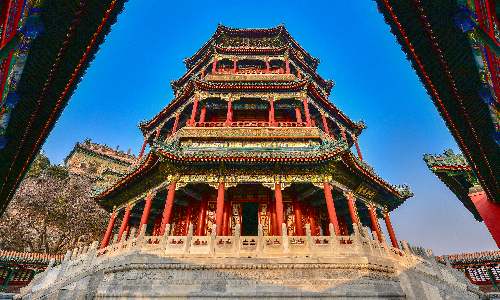
In the morning, you will head to the Confucius Temple. It took 4 years to finish its building from 1302 to 1306 and it was rebuilt in the Ming Dynasty (in 1411). The Confucius Temple covers an area of 22,000 square meters. From south to the north stands Xianshi Gate, the Gate of Great Achievements, the Hall of Great Achievements, and the Ancestral Temple for Worshiping the Parents of Confucius. These buildings are covered with yellow glazed tiles. Most of you may have already known Confucius. Confucius was a great thinker, educator, politician, and the creator of Confucianism. And the Confucius Temple was built in memory of the great person. Confucius has a great influence on people both at home and abroad. There are about 2,000 Confucius Temples around China, Japan, Vietnam, the United States, and other countries. More than 1,600 temples were built in China. From its wide spread, you will know the extensive influence of Confucius’s thoughts.
After lunch, you will head to the Badaling Great Wall. It will take you about an hour to drive northwest for about 62 kilometers. The Badaling Great Wall is an important part of the defensive system in ancient China. On June, 21st, 2021, a light show was held here to celebrate the 100th anniversary of the founding of the Communist Party of China. You can visit famous attractions such as Guancheng and Eight Enemy Towers. There is a legend about the Eight Enemy Towers. It is said that a long time ago, this place was covered by water. One day, eight celestials came to the Badaling and felt tired. They decided to rest here. Therefore, they cast a spell to create 8 piers. And then they came to the Jade Emperor (the God with the highest position in Chinese legend) to ask him to make this place which used to be a world of water land and create creatures here. After thousands of years, the first emperor of the Qin Dynasty (221 BC-207 BC) began to build the Great Wall. Workers copied the bricks in the shapes of the bricks which the celestials used to sit on, and built the wall with the original eight piers connected. The eight piers were now Eight Enemy Towers. Walking along the Great Wall, you will feel amazed at the wisdom of the ancient working people.
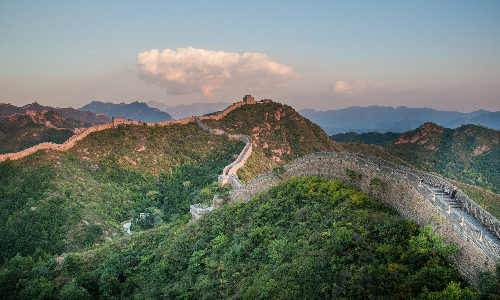
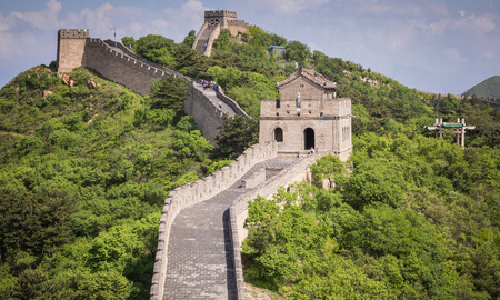
 Xi’an
Xi’an Today, you will end your tour in Beijing and head to Xi’an. After breakfast, your tour guide will accompany you to the airport and say goodbye to you. You will take the estimated flight CA1223 12:00/14:05 to Xi’an, the capital of ancient China. Xi’an has a long history and has witnessed the prosperity of ancient China. Once you arrive in Xi’an, your tour guide will be waiting for you at the arrival lobby and warmly welcome you. You can start your journey in Xi’an.
Optional Sightseeing: If you are interested in the terra cotta figurines of ancient China, you can go to visit the Hanyangling Museum on the way to the city center of Xi’an. It is located at the riverside of Wei River. It is a tomb built in the Han Dynasty (202 BC-220). Emperor Hanjing and his Empress were buried here. Hanyangling Museum has integrated modern technology, ancient civilization, history, and landscape. In the exhibition hall with an area of 1,600 square meters, you can see about 1,800 cultural relics, such as pottery dogs, female standing sculptures, and clay soldiers. They are true to life. If you come to this place, you will have a better understanding of Chinese history.


In the morning, you will go to the Terra Cotta Warriors and Horses Museum. This museum was built on the ruins of Terra Cotta Warriors and Horses, 37.5 kilometers away from downtown. Therefore, we will drive northeast for about an hour to get to the museum. Now, there are 3 Terra Cotta Warriors and Horses pits excavated. A great number of terra cotta warriors, horses, and bronze wares were discovered. It is worth mentioning that the Terra Cotta Warriors are life-size and as natural as though they were alive. As for their appearance, some of them look like western people. At that time, Emperor Qin Shihuang, the first emperor of the Qin Dynasty believed that ancient China was the center of the world and other countries should submit themselves to his rule. Therefore, he ordered workers to make figures of foreign people to show his supreme position. By visiting this museum, you will understand how powerful Qin Dynasty used to be.
After lunch, your tour guide will take you to the Big Wild Goose Pagoda. The Big Wild Goose Pagoda was built in the Tang Dynasty (618-907). The pagoda has 7 stores with a height of 64.517 meters. It is a symbol of ancient Indian Buddhism culture integrating into Chinese culture. It is said that the Big Wild Goose Pagoda was built to store the Buddhist texts and statues of Buddha that Xuanzang(an eminent monk in ancient China) brought back from ancient India. There was a novel, Journey to the West, telling the story of Xuanzang’s journey to ancient India. If you have read this novel, you will find how hard it is to get the Buddhist texts.
Then we will visit the Ancient City Wall. The Ancient City Wall was built in the Ming Dynasty, located in the city center. The wall is 13.7 kilometers in length with 4 old city gates. In the Republic of China (1912-1949), more gates were built for people to come in and go out of the old city. Now there are 18 gates in total. It is lucky for us to see the Ancient City Wall today. At the beginning of the founding of the People’s Republic of China, architects proposed to demolish the old city walls around the country because they believed the wall had no use but only hampered the traffic. Therefore, the Ancient City Wall in Beijing was torn down. However, Xi’an decided to keep the wall. Time has proven that this decision is right. The existence of the Ancient City Wall has given us a chance to know more about Chinese history.
Free Time Suggestion:
If you are not tired, you can choose to visit the Great Tang All Day Mall. It is located next to the Big Wild Goose Pagoda. It covers an area of 650,000 square meters. The Great Tang All Day Mall is themed by the glorious age of the Tang Dynasty. Walking around the North Square of the Big Wild Goose Pagoda, Xuanzang Square, Zhenguan Square, and New Times Square, you can have a taste of the culture in the Tang Dynasty. In the evening, the attraction is brilliantly illuminated. The most attractive part of this place is the tumbler acted by a beautiful girl. Thousands of visitors come here to see her performance. I can assure you that you will not regret being here.
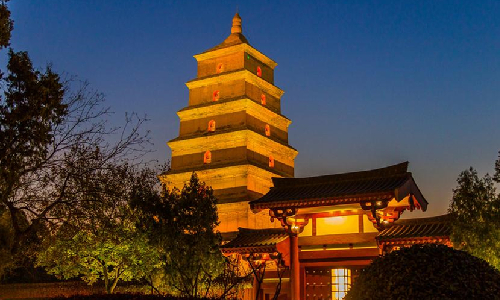
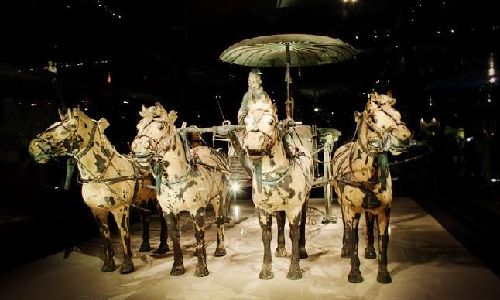
 Luoyang
Luoyang Today, you will leave Xi’an for Luoyang. After breakfast, you will be transferred to the train station and take the estimated train G3154 9:00/11:25 to Luoyang. Luoyang is also a city with a long history. It is the cradle of Chinese civilization and the starting point in the east of the Silk Road. 13 dynasties had made Luoyang their capital city.
If you come to Luoyang, the Longmen Grottoes is a must-see place. The Longmen Grottoes was built in the Northern Wei Dynasty (386-534). After more than 1,400 years of continuous construction in more than 10 dynasties, Longmen Grottoes is the longest-built grotto in the world. There is a legend about the Longmen Grottoes. There is a river which is a branch of the Yellow River flowing beside the Longmen Grottoes. The river is moving fast at this place and the carps in this reach try to swim upstream. They believed that if they could jump over the Longmen (dragon gate) here, they would become dragons (a legendary animal in China). Therefore, people use the story of carp jumps over the dragon gate to refer to people who become successful with their unremitting efforts. Besides, you can also enjoy the beauty of the Buddha statue in the mountain. You will be surprised at their fineness. When you finish your visit, you will be transferred to the hotel where you can have a good rest and look forward to the journey the next day.
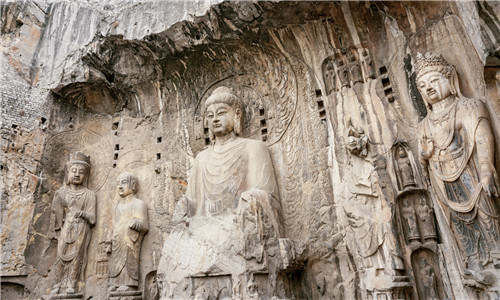
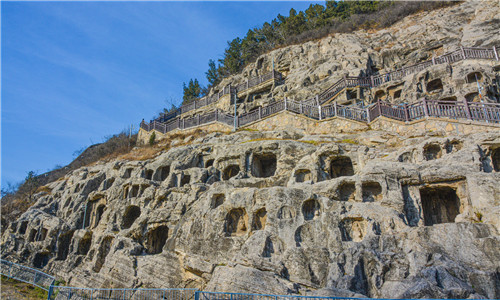
In the morning, we will drive east for about 1.5 hours to the Shaolin Temple, which is 60 kilometers away. Shaolin Temple is located at the foot of the Songshan Mountains. It is one of the cradles of Chinese Buddhism and Chinese Kungfu. The temple was built in the Northern Wei Dynasty (in 495) to settle a respectable monk from ancient India, Master Dharma. Shaolin Temple covers an area of 57,600 square meters. When we mention Shaolin Temple, Shaolin Kungfu will come to people’s minds. It is said in the Northern Wei Dynasty, a famous monk, Master Dharma came to China to teach Buddhism. After days of meditation in the temple, he felt tired and sleepy. Therefore, he created several moves to stretch based on Chinese people’s moves of building their bodies. These moves became the embryonic forms of Shaolin Kungfu. If you want to learn some moves, you can’t miss the Kungfu show, which will last 30 minutes. The monks will perform Hard Qigong, a type of Shaolin Kungfu. During the performance, you will have a chance to learn from the monks. After the performance, you can go to the Pagoda Forest. About 241 pagodas were erect here, under which the eminent monks in the Shaolin Temple of past dynasties were buried. You can know the whole life of the monk by reading the tablet inscription near the pagoda. I believe you will have a better understanding of Chinese Buddhism at this place.
After lunch, your tour guide will take you to the White Horse Temple, which is 55 kilometers away. We will drive northwest for about an hour and a half to get here. The White Horse Temple was built in the Eastern Han Dynasty (25-220). It is the first temple built by the feudal government since Buddhism was spread into China. The White Horse Temple helped spread Buddhism to Japan, Southeast Asia, and western countries. It has become a holy land for Buddhism followers around the world. There is a bell in White Horse Temple representing good luck and happiness. The bell enjoys a high reputation in Japan and many Japanese people come to the temple to spend their New Year. I believe you will know better about Buddhism after visiting the temple. After a long day, you must be tired. Your tour guide will take you to the hotel. You can have a long sleep there and get ready for tomorrow’s journey.
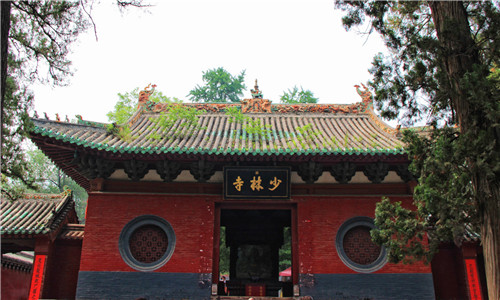
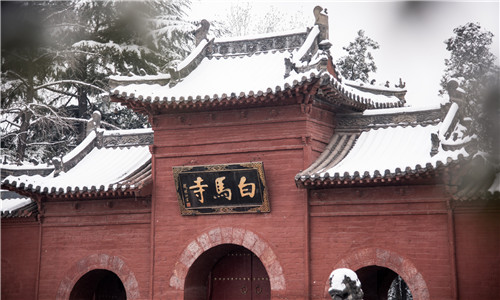
 Huangshan
Huangshan After breakfast, your tour guide will escort you to the airport. You will take the estimated flight FM9559 12:20/13:50 to Huangshan City, a city of Anhui Province. Once you arrive in Huangshan, your tour guide will pick you up and take you to the comfortable hotel prepared for you. You can have a good rest there. If you are not tired, you can take a walk near the hotel and breathe the fresh air of Huangshan. It will make you relaxed and have a sweet sleep at night.
In the morning, we will drive northwest for an hour and a half to Hongcun Village, which is 60 kilometers away. Hongcun Village is a famous village with a long history. There are about 140 well-preserved dwellings built in the Ming and Qing Dynasties. It is said that in the middle of the 14th century, Wang’s family moved several times because their houses were burned no matter where they moved to. Then, the leader of the big family found a dream place that their ancestor used to describe in his last words. Wang’s family finally decided to settle in the Hongcun Village and build houses here. Hongcun Village is famous for its embroidery and bamboo works. You can choose some as gifts for your families and friends.
After lunch, we will return to Huangshan. You can head to Tunxi Old Street. The Tunxi Old Street is located at the riverside with a mountain in the north. It is 1,272 meters in length. There is 1 main street as well as 3 subordinate streets and 18 alleys. The houses in the street are typical Hui-style architecture (a traditional Chinese architecture existing in Anhui Province and Zhejiang Province) with gray tiles and Ma Tau Walls (a special fire wall). A famous thinker and scholar, Dai Zhen used to live here. You can see Dai Zhen Memorial Hall on this street. There are more than 300 shops which have opened for a long time. You can buy the Four Treasures of the Study (writing brush, ink stick, ink slab, and paper) and some well-known tea at the shops. You can keep them as souvenirs or give them as gifts to your friends.
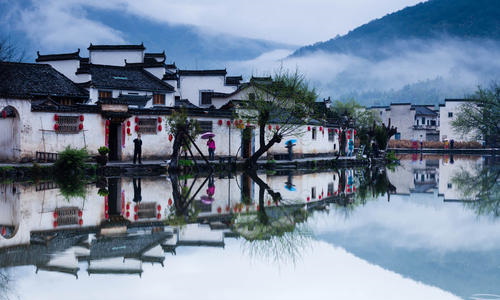
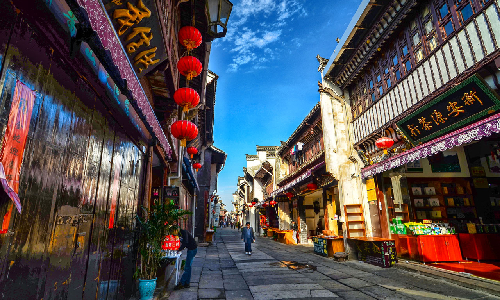
After breakfast, we will go to Mount Huangshan. It will take us about an hour to drive north to get here. Mount Huang is 53 kilometers away from Huangshan City. There are 72 peaks in Mount Huang. Its main peak, Lotus Peak has an altitude of 1,864 meters. The most representative attractive attractions here are the strangely-shaped pines, fantastic rock peaks, the sea of clouds, hot springs, and snow in the winter. If you want to have a whole view of Mount Huang, you can take the cable car to the peak, officially starting your student tour to Mount Huang. At this height, you can appreciate the beautiful scenery of this mountain. There are some places that you can’t miss, which are Lotus Peak, the Pine Greeting Guests, and the Lion Peak. The Pine Greeting Guests is a pine tree growing in the rocks and its branches stretch to the same side. It looks like the tree opening its arms and welcoming the guests. That’s how it was named. By the way, this tree is 1300 years old. You will feel amazed. Then your tour guide will take you to the hotel and you can rest yourself there.
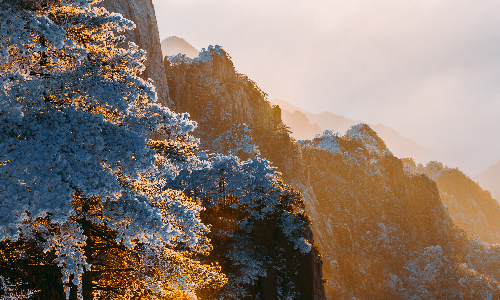
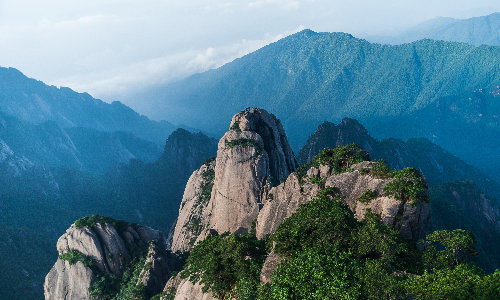
 Shanghai
Shanghai Today, you will end your journey in Huangshan. After breakfast, you will be transferred to the North Huangshan Station and take the estimated train G7320 11:50/14:18 to Shanghai. Your tour guide will be waiting for you and pick you up at the station. If you have any questions about the schedule, feel free to ask your tour guide.
On your arrival, you will go to the Bund for a visit in the afternoon. The Bund is at the riverside of the Huangpu River. It is 1.5 kilometers in length, with financial and foreign trade institutions of old Shanghai on one side. Since Shanghai opened as a port, the Bund has become a financial center of China. There are 52 classical buildings with different styles. The Peace Hotel is one of them. This hotel belongs to the Chicago School of Gothic architecture. The Peace Hotel is famous for its luxury and mainly receives well-known figures of the commercial circle and government in the 19th century. It opened in 1929. Till now, the hotel has accommodated more than 101,468 guests.
After visiting the Bund, you can turn to Nanjing Road. Nanjing Road is 1,033 meters in length, covering an area of 30,000 square meters. People often come to this place for a walk. Many famous shops are located on this street, such as Laodafang, Shao Wansheng, and Zhang Xiaoquan. You can buy some local snacks like fresh pork mooncakes and handicrafts like Zhang Xiaoquan scissors at these shops. There are also some luxury stores on this street. I believe you can find everything you want here.
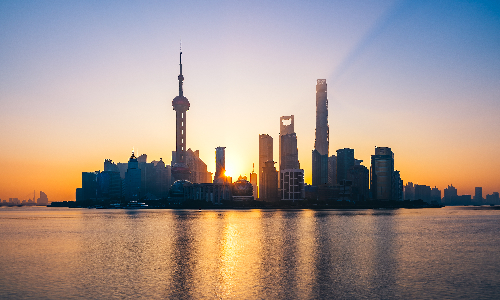
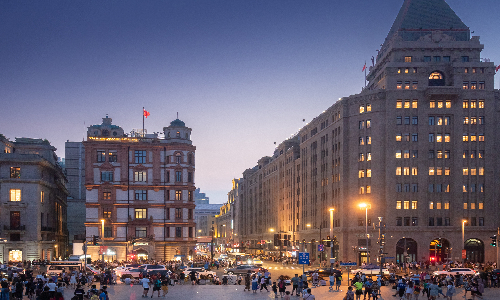
In the morning, you can go to visit the Zhujiajiao Ancient Water Town. We will drive southwest for about an hour to get to the town, which is 48 kilometers away. This is the first stop of your Shanghai student tour. Zhujiajiao Ancient Water Town is at the junction of Jiangsu Province, Zhejiang Province, and Shanghai. It is regarded as an abundant place with convenient traffic and rich resources. As early as 1,700 years ago, villages and markets existed here. In the Ming Dynasty, many merchants came here for business and made this place a prosperous town. You can visit the Peking Opera Corner, Singing Corner, Literature Corner, and so on. You will have a deeper understanding of Chinese culture after visiting the old town.
In the afternoon, you can head to the Yu Garden (closed each Monday). The Yu Garden is located northeast of the old city of Shanghai. With a history of more than 400 years and an area of 20,000 square meters, it was built in the Ming Dynasty. It opened to the public in 1961. There are many old trees in this garden. The ginkgo tree in front of the Wanhua Hall is 430 years old with a height of 26 meters. It looks like a giant compared with other trees. You will see more attractions during your visit.
And then, you can go to the Shanghai Tower. Shanghai Tower has 127 stories on the ground and 5 stories underground with a height of 652 meters. This height makes the tower the best place to enjoy the full view of Shanghai. Shanghai Tower is equipped with 3 ultra-high-speed elevators. The elevators have the fastest speed in the world with an ascending velocity of 18 meters per second. It only takes us 55 seconds to get to the 119th floor from the second floor underground. Isn’t it a unique experience to take the fastest elevator in the world?
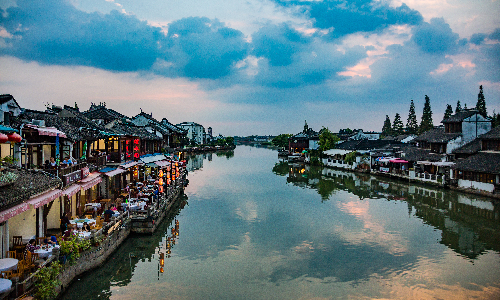
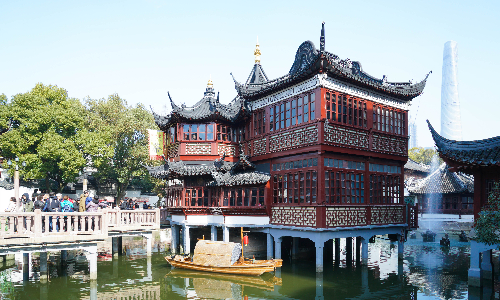
Today is your last day in China. After breakfast, your tour guide will take you to the airport and wave goodbye to you. Your 13-day China student tour ends here. I hope you have enjoyed yourself and welcome to China next time.
Author: Mengdi Chi
Proofreader: Summer Hou
| City | Five Star hotel list | Four Star hotel list |
|---|---|---|
| Beijing | Sunworld Dynasty Hotel Beijing Wangfujing | Sunworld Hotel Wangfujing |
| Xi'an | Tianyu Gloria Grand Hotel Xi'an | Sunworld Dynasty Hotel |
| Luoyang | Lee Royal Hotel Mudu | Xinyuan International Hotel |
| Huangshan | Huangshan International Hotel | Huangshan International Hotel |
| Shanghai | Ocean Hotel Shanghai | Courtyard by Marriott Shanghai Central |
 |
![]() About your child or infant, please contact us for a discounted price.
About your child or infant, please contact us for a discounted price.



We started with a few days in Beijing & ended in Shanghai, from where we visited the Forbidden City and Great Wall. In between we visited Terra Cotta Warriors Museum, Panda Base, Shanghai Disneyland.

We had a wonderful holiday in China which will remain long in the memory. China is a breathtakingly beautiful country full of splendid temples and palaces, mountains and rivers, peaceful rural scenes and bustling shopping streets.
 QUICK ENQUIRY
QUICK ENQUIRY